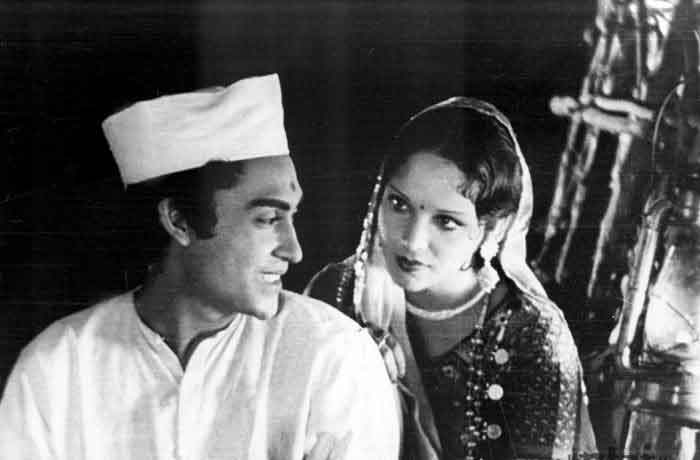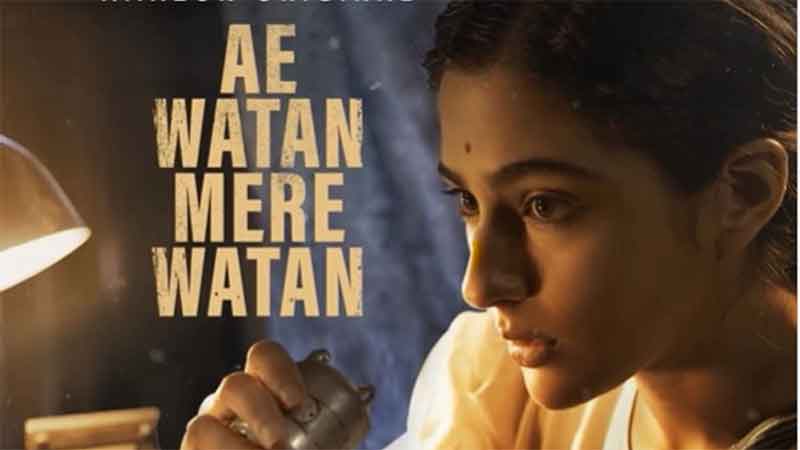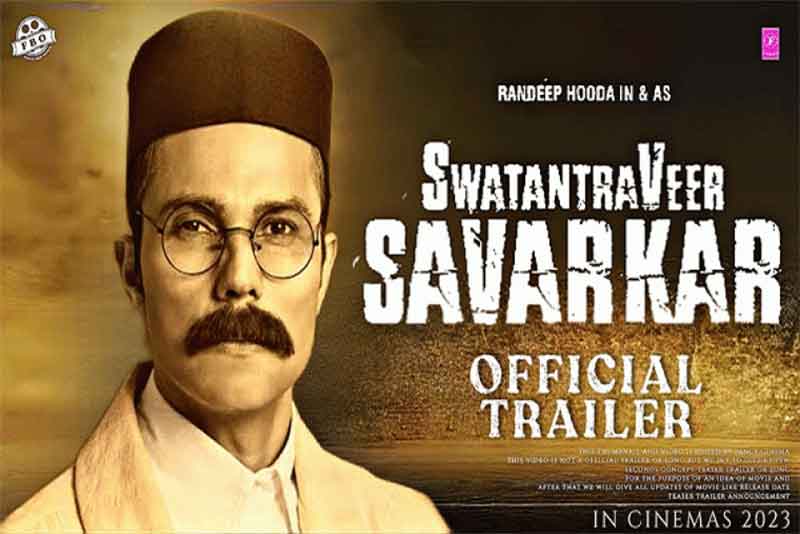
Devika Rani is the name of that legendary figure who not only ruled Hindi cinema in the decades of 1930s and 1940s, but also gained fame as the first actress of Hindi cinema. She was not only a star or actress but the one who later became a filmmaker, gave legendary actors like Madhubala and Dalip Kumar to Hindi cinema. She was a great-grandniece of Rabindranath Tagore who born on 30 March 1908 in Visakhapatnam in the state of Andhra Pradesh, India. It was in 1934 when she co-founded Bombay talkies in India with her first husband Himanshu Rai and later became its sole owner after Rai’s untimely death. It was a spearheading top notch film studio built in the northern suburb of Malad in Bombay, whose creation history and whose very presence strike a fascinating, consist a jolting note on film history. In this way, she played a huge role in introducing Indian cinema to the world. In one her interview to Indian Express Kishwar Desai author of The Longest Kiss: The Life and Times of Devika Rani admire the Diva “She described herself as a career woman, who strongly believed in financial independence. She sat on the management board of Bombay Talkies and became the only actress of her time who was a shareholder in the management agency, as well as the sole producer and controller of productions. Unlike other artistes who could not take the pressure and fell apart or became alcoholics, Devika took the ups and downs in her stride”.
While Himanshu Rai was at London he got a chance to meet Niranjal Pal, who was the son of Indian nationalist Bipin Chandra Pal a who then active as playwriter. Himanshu made a team with where Rajnarayan Dube got work of principal financer.
Light of Asia was the first film Bombay talkies produced. The movie was based on the life of Prince Siddhartha, and how he achieved enlightenment. The next films to be produced from the studio were Jawani ki Hawa, Achhut Kanny and Jeevan Naiya. German technicians such as director Franz Osten and cinematographer Josef Wirsching helped Bombay Talkies produce technically sublime movies in its formative years. This elevated Bombay Talkies to its position as of the leading film studios of India and opened the path for later institutions such as R.K. Studio.
She spent most of her early life in foreign land. In London. she learned architecture and then began to serve in a textile company. The year 1928 became a turning point in her life when she met Himanshu Rai who asked her to join his production crew for assisting in costume design and art direction for the film Throw of Dice (1929). Then she married him in 1929 and went to Germany where she got a chance to learn different aspects of film-making in the UFA Studios in Berlin. She was first cast by Himashu in the movie karma (1933). The couple returned to their motherland India in 1934 and founded Bombay talkies and they began to produce movies. It was in the year 1936 when Bombay Talkies produced one of its most acclaimed movie, Achhut Kanya.
Achhut Kanya (1936), was a classic movie made in the colonial period, first appearing to explore and attack the caste system of Hindu society. It was for the first time when big banner film was seen to deal with the sensitive issues of caste and untouchability as the main theme, and effort to have a poignant and meaningful statement on the oppression of the untouchables. Devika Rani and Ashok Kumar portrayed the two leading characters in the film. Devika Rani played the character of Kasturi, a Dalit girl, who is the daughter of a Dalit man named Dukhiya. Ashok Kumar plays the role of a Brahmin boy whose father’s name is Mohan. In nutshell, this is the story of two individuals who are in companionship with each other since childhood and develop a love for each other but cannot marry due to social norms. But this is not just the story of a loving couple, it is also the story of two other friends who play the role of fathers of this loving couple, Dukhiya (father of Kasturi), and Mohan (father of Pratap). Where Dukhiya worked as a stopper man at a railway crossing, Mohanlal runs a grocery shop of his own. An incident turns them into lifelong friends. Once a snake bit Mohan’s foot, on seeing this Dhukhiya sucked out all poison and thereby saved Mohan’s life. Though such life-saving acts deserve appreciation, Dhukhiya apologized to Mohanlal for touching him. The life-saving act Dhukhiya was also an act of breaking societal norms which disallowed untouchable to touch a high caste man. Even the mere shadow of an untouchable was supposed to pollute the high caste man.
On the other hand, Mohan is shown as a progressive Brahmin, who not only forgives Dukhiya for touching him but also establishes a lifelong friendship with him out of gratitude. This friendship opens the way for the friendship between their children, Kasturi and Pratap, they become friends with each other from their very childhood days, grew up together, while playing together carelessly in the village. When they grow up, they develop immense respect and love for each other. The village inhabitants were intolerant to such friendships. In the case of Kasturi and Pratap, the first opposition to their friendship comes from within the family when Pratap’s mother finds that her son has eaten food from the Kasturi family. She decided to set the limits to their friendship. Innocent Kasturi and Pratap were shown questioning the socio-cultural norms which divide the village society. Afraid of their friendship, Pratap’s mother in a hurry marries him to the girl from their own caste. It was the caste prejudice, class difference, and religious bigotry that made impossible the marriage of these lovebirds. The movie has shown a progressive act against the dowry system when Pratap’s mother brought her daughter-in-law without dowry, but this also backfired Kasturi as Mohan had promised Dhukiya that he would arrange the dowry for Kasturi’s wedding from whatever they would receive from the in-laws of Pratap at his wedding. Despite all this, Devika did not feel hurt or left out, and instead tried her best to befriend Pratap’s newly wedded wife. She is portrayed as a generous, understanding, and self-sacrificing girl.
Following the marriage of Prataps, things began to take turns for the worse when an incident where Mohan brings ill Dhukhiya to his home, to look after him, causes riot in the village. Village folks who were already disappointed over the news of Pratap having food at the Kasturi house, raised their arms to oppose furiously the Pratap father’s act of bringing an untouchable Dhukhiya to his home. An instigated mob of village folks accused Mohan for destroying religion and causing impurity into the neighbourhood and in his own home. The confrontation turned violent when Mohan disregarded mob’s demands, and did not throw his untouchable friend from his house. On contrary, he asked the mob, “Are untouchable, not human beings too?” In reply, the mob plundered his shop and set his house on fire. Confrontation caused injury to Mohan. To avail the immediate medical assistance to Mohan, ill Dhukhiya ran to the railway station with an intention to stop the upcoming train to escort the doctor from it. In consequence of such a controversial act, Railway authorities suspended him from his duties and replaced him with another man named Mannu. Soon Mannu was also chosen as a groom for Kasturi by Dhukhiya who feels endowed to Mannu for sharing his place with them after the suspension of Dukhiya. Both Pratap and Kasturi had to end up in a loveless marital alliance, helplessly because of societal norms.
Later it was found that Mannu was already a married man who had abandoned his first wife. Kajri who was the first wife of Manu on hearing about his second marriage came and asked for her marital rights. Though Mannu was not interested in any settlement with Kajri, Kasturi welcomed her and said that kajri had the right to live with her husband and she would never come in between them.
Jealous and clever Kajri with unwitting Meera planned to trap and abandon Kasturi at an organised fair in a neighbouring village, where Pratap was also assigned a small grocery stall. The idea was to make Mannu believe that Kasturi was having an affair with Pratap, and wanted to elope with him. Where Kajiri’s intention behind defaming Kasturi was to throw her out from Mannu’s life, Meera believed that this may help in the reunion of Kasturi and Pratap. Innocent Kasturi agreed to accompany the two to visit the fair, and Kajiri succeeded in abandoning Kasturi at the fair. A chance encounter at the fair, brought the Pratap and Kasturi together, who after their marriages wisely afraid of their love, kept the distance with each other. After searching a lot for Kajri and Meera at the fair, Pratap offered Kasturi a ride to back home. On the other hand, as per their plan, Kajiri and Meera on their return reported to Mannu that Kasturi refused to come back with them as she wished to run away with Pratap. The next scene shows that inflamed by jealousy and suspicion, Mannu attacks Prataps at the railroad crossing when he sees Kasturi and Pratap returning from the fair together. While the two men were engaged in a fierce fight unmindful of a fast-approaching train, Kasturi ran to save their lives, but she was mowed down by a speeding train. She had sacrificed her own life to save the man she loves and the man she married.
Achyuta Kanya seen using heterosexual love as a symbolic bond to unite the upper and lower castes. The heroine who saved her lover and husband’s life by coming down to the moving train and giving her life at the altar of religious fanaticism and human intrigue was able to show a sense of compassion in the audience, and bring tears in the eyes. In fact, such an act of personal heroism, succeeded to move even those audiences who did not subscribe to the film’s basic thesis. The Dalit here is the one who had to give it all up, a clear projection of the society back then. The film also shows how rumours and stereotypes could instigate mob violence which works as an effective tool to maintain the traditional oppressive morality in society.
Achut Kanya’s signature song “Mai Ban Ki Chidiya Bana Ke Balban Dolun Re” not only extends the story of the film but also leaves a sarcasm on the human life who unlike the free birds and animal of the forest are surrounded by so many prejudices and bounded to lots of restriction. It is due to which they not only make their own life complex but remain unable to respect the choices and understanding of their loved ones.
Bombay Talkies came up with Achhut kanaya when India was facing major political unrest and social crusade. At this time India was pitching up for her final assault on the British Raj, to free herself from the clutches of the foreign rule. The decades of the 1930s and early 1940s proved to be significant not only in the history of the Indian freedom struggle but also for socially relevant cinema in India. We tag these days of Indian cinema as the golden era particularly for the subjects it dealt with and for producing socially purposeful cinema. Cinema of those days did not remain aloof of impact and influence of what was going on at political and social level in India. To a degree, it was also influenced by the ideals and objectives of the Indian National Movement. Patriotism, zeal for social reform, advocacy of democracy, and thrust for freedom of India were reflected, directly or indirectly, in one form or another in the films of these days. Themes associated with social reforms like the caste system, the tangled life due to mismatched marriages, women’s freedom, Hindu-Muslim unity, peasants’ grievances, and growing inequality between the rich and poor were the most favourite subjects of film companies at that time. Even politicians encourage industry to produce films on daily issues to help the emancipatory project and strengthen the Indian freedom struggle.
In the 1930s and 1940s, Gandhi and Congress seen to be more conscious over the issues of untouchability, women’s emancipation, and Hindu Muslim unity and made these subjects central to the freedom movement. In order to claim for Indian Independence leaders had to prove that Indians are worthy of self-rule and possessed the capacity to remove all social evils. On the other hand, by this time Dalits and other socially marginalised groups of Indian society, due to penetration of education and mobilisation provided by various socio-religious and political groups become conscious about their relevance in representative politics. They came up with their own political parties, unions and began to launch their own movements for freedom. They wanted freedom not only from Britishers but also from Hindu Raj. The population of untouchables was pegged at 50 million, enough to shift the balance of power in the hands of either Muslims or Hindus. Hindus would lose the majority if untouchables chose to identify themselves as Muslims. There was apprehension too that the lower castes would revolt against centuries of oppression by caste Hindus. Thus, the idea of separate classification of lower castes unsettled the caste Hindu leadership. This fear of being dominated by the lower castes Hindus translated itself into action as the Poona Pact of 1934. Gandhi had to phase the strong competition for claiming himself the leader of oppressed groups in general and of Dalits in particular from Ambedkar who by this time succeeded in keeping issues like the position of women, the caste situation, and economic disparities in the domain of public discussion. In 1932 Ambedkar proposed separate electorates for Dalits in provincial legislative assemblies. This proposal was already accepted for Muslims. But Gandhi, in order to oppose Ambedkar’s demand for a separate electorate for Dalit, went on hunger strike and finally succeed to alter the idea of a separate electorate, signed the Poona pact of 1934. To win the Dalits on his side Gandhi began to speak relentlessly against untouchability in his speeches and publication and launched the Harijan movement. Considering the Gandhian moment an important transitory period for social changes, different industrial clusters including Indian cinema began to respond to the Gandhian hegemony during the 1930s. In 1936 Gandhi started the Civil Disobedience Movement, which required political mobilization on a huge scale to make the British bow and to India’s independence. Undoubtedly Achhut Kanya could not find a more opportune time than this when Congress was in great need to patronise Dalits to earn their support in the Civil Disobedience movement against British Raj. For the project of Nationalism, it become essential and matter of for most importance to cultivate at least sympathy among Hindus to keep the untouchable on congress side and to hinder them claiming separate identity. The body of untouchables became the centre on which the idea of national and nationalism was increasingly being imagined. The subjugated people who were denied entry into temples and people’s houses suddenly acquired immense importance, so much as that they became crucial to deciding nation’s fate. It was indeed significant, but would it benefit them in any way?
Though the movie was considered bold, was produced in utmost need, did foreground the question of untouchability yet it allowed itself to be listed by the mainstream Gandhian thinking about Harijan reform. The movie lacks a radical approach instead of challenging the caste system and looking for its abolition altogether, it permutes Gandhian discourse, by seeking a marginal resolution. The film’s success would not be possible without an outstanding performance by Devika Rani. Jyoti Atwal professor at Centre of Historical Studies while commenting on movie argues “It is interesting to note that despite the onset
of collisional politics between Ambedkar and Gandhi- softer, feminine images of the sacrificial “low” caste women attained popularity. Through cinematic representation, the “low” caste woman’s body seemingly absolved the high caste Hindu men of their guilt. The imagined “low” caste woman entered the “upper” caste male’s world of literary myth, romance and suffering”.
Achut Kanya became a path breaking film for both Bombay Talkies and Devika Rani. It received critical acclaim both for its contemporary relevance and literary richness. During the film screening, Sardar Vallabhai Patel remarked, “”If the picture helps India to remove this curse, it can be said to have helped India to win Swaraj as untouchability is one of the chief obstacles in the road to freedom”. Pandit Nehru and Sarojini Naidu also appreciated the film’s progressive stance.
The British government interned the celebrated composer Walter Kauffman and screenwriter Willy Haas when the second world war broke out. They were a part of Bombay Talkies. This adversely affected its management. Himanshu Rai became depressed and his relationship with Devika Rani took a turn for the worse. This caused a huge toll on his health, and he died in 1940 at the age of 48 due to the nervous breakdown caused by the crisis.
When Himanshu Rai passed away, the Bombay Talkies was managed by Devika Rani until 1945, when she married Russian painter Svetoslav Roerich. She ran with great success in a time when the industry was dominated by men. Kishwar Desai remarked in her interview published in the Sunday post, saying “She ran the studio with a steel hand, squashing all rebellion and constantly walking a tightrope when it came to the men around her ”. She is the one who launched the careers of Dilip Kumar, Ashok Kumar, Madhubala, and Raj Kapoor who later earned much fame in Indian cinema. Her persona and the characters she played in the films were often considered socially unconventional. The awards she won for her remarkable contribution to Hindi cinema includes the Padmashri (1958), Dadasaheb Phalke Award (1970), and the Soviet Land Nehru Award (1990). She breathed her last on March 9, 1994, aged 85.
Author biographical note
The author is a PhD scholar at the Department of History, University of Delhi. And a member of the Board of Trustees of Save The Heritage Foundation (STHF). She has received a Post-graduate degree in Modern History from Jawahar Lal Nehru University. Her current field of research is Dalit history.
GET COUNTERCURRENTS DAILY NEWSLETTER STRAIGHT TO YOUR INBOX















































